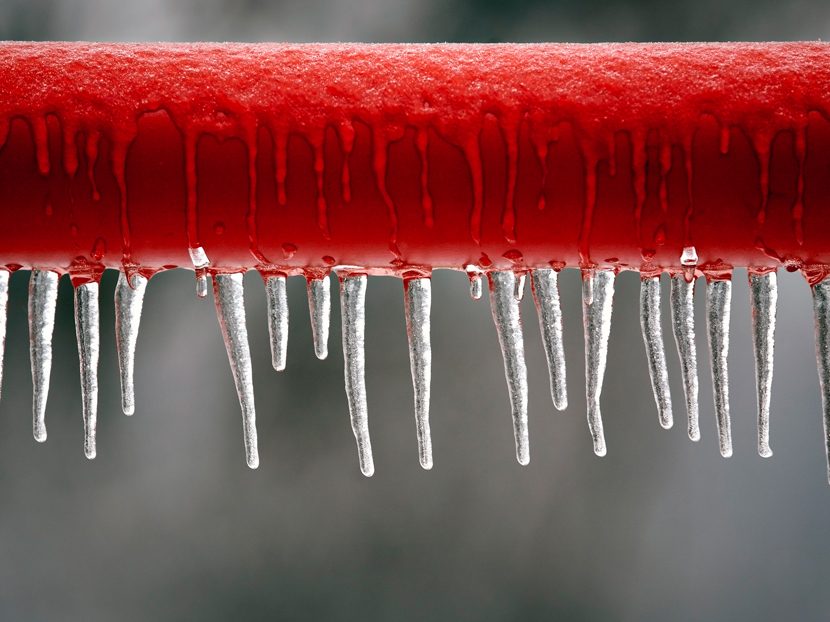Steps to Follow When Your AC Pipe is Frozen: Complete Manual
Steps to Follow When Your AC Pipe is Frozen: Complete Manual
Blog Article
We've found this article relating to How can I fix an air conditioner’s frozen pipe? down the page on the web and reckoned it made good sense to discuss it with you here.

Introduction
Finding that your AC pipe is frozen can be worrying, specifically during hot summer months when you depend on your air conditioning system one of the most. Recognizing what to do in such a circumstance is vital to stop more damage to your air conditioning system and ensure your comfort inside your home.
Understanding the Causes
A number of aspects can add to the cold of an a/c pipe. Understanding these reasons can assist you resolve the issue properly.
Lack of Airflow
One usual reason for an icy air conditioning pipeline is inadequate airflow. When the air flow over the evaporator coil is limited, it can trigger the coil to drop below freezing temperature, causing ice formation on the pipe.
Reduced Refrigerant Levels
Insufficient refrigerant levels in your AC system can additionally cause an icy pipe. Low refrigerant levels can create the pressure in the system to go down, resulting in the freezing of wetness on the evaporator coil.
Winter Conditions
In chillier environments, freezing temperature levels outside can add to the cold of air conditioner pipes. If your a/c device is not properly insulated or if there are leaks in the ductwork, chilly air can infiltrate the system, causing the pipe to ice up.
Dirty Air Filters
Unclean or clogged air filters can restrict airflow in your a/c system, resulting in numerous concerns, consisting of a frozen pipeline. It's essential to change or cleanse your air filters regularly to make certain appropriate air movement and avoid ice build-up.
Signs of a Frozen AC Pipe
Acknowledging the indications of a frozen AC pipe is crucial for timely activity.
Lowered Airflow
If you observe a considerable reduction in airflow from your vents, it might suggest an icy pipeline.
Ice Buildup on the Pipe
Visible ice accumulation on the refrigerant line or the evaporator coil is a clear sign of a frozen air conditioning pipe.
Odd Sounds from the Unit
Unusual audios, such as hissing or gurgling, originating from your air conditioner system can signify that there's ice present on the pipe.
Immediate Actions to Take
When confronted with a frozen AC pipeline, it's necessary to act quickly to stop additional damage to your air conditioning system.
Turning off the a/c
The initial step is to turn off your ac unit to avoid the system from running and worsening the concern.
Looking for Blockages
Inspect the area around the indoor device for any kind of blockages that may be obstructing airflow, such as furnishings or drapes.
Thawing the Pipe
You can make use of mild approaches like putting towels taken in cozy water around the frozen pipe to help thaw it gradually.
Safety nets
Taking safety nets can aid avoid future incidents of a frozen air conditioner pipe.
When DIY Methods Fail
If your efforts to thaw the pipe or address other problems are not successful, it's time to employ an expert.
Importance of Hiring a Professional HVAC Technician
A qualified HVAC service technician has the proficiency and tools essential to diagnose and repair issues with your AC system safely and efficiently.
Normal Maintenance Checks
Arrange normal upkeep talk to a specialist HVAC specialist to ensure that your a/c system is running efficiently.
Changing Air Filters
Routinely change or cleanse your air filters to prevent air movement constraints and keep ideal efficiency.
Protecting Exposed Pipes
If your air conditioning pipelines are revealed to cool temperature levels, think about shielding them to avoid freezing during winter months.
Seeking Professional Help
If DIY approaches stop working to solve the problem or if you're unclear concerning exactly how to continue, it's best to look for assistance from a qualified HVAC professional.
Conclusion
Managing a frozen AC pipe can be a discouraging experience, yet understanding exactly how to react can help minimize damages and bring back comfort to your home. By comprehending the reasons, acknowledging the signs, and taking punctual action, you can efficiently deal with the concern and prevent future occurrences.
Why is My AC Freezing? How to Fix an Icy Air Conditioner
As your air conditioner pumps out cool air to keep you and your family comfortable during the hot Kansas and Missouri summers, you need to feel sure that it will continue to work without fail. Sometimes, air conditioners freeze or become covered in ice. Cates Heating and Cooling wants you to understand why your air conditioner may be freezing up and how you can fix it.
What is Causing Your AC to Freeze?
It can be hard to pinpoint just what is causing an air conditioning unit to freeze, but the only way you can properly fix the problem is to determine the source. Two of the main reasons that air conditioners ice-up are:
Clogged air filters
Clogged air filters restrict the flow of air over the evaporator coils. Restricted airflow can cause the evaporator coil to drop below freezing and accumulate ice due to the humidity in the surrounding air.
Insufficient refrigerant
Low levels of refrigerant can be caused by a leak in the system or from improper installation when first charged. When the refrigerant drops too low, the temperature of the AC’s evaporator coil will drop too low and cause freezing and ice accumulation.
How to Fix a Frozen AC
The first thing you should do when you notice that your AC is frozen is turn the system off. Then, check the air filter to see if debris is clogging up the filter and preventing air from passing through. If your filter is dirty, change it out for a clean one and allow your unit time to defrost. You’ll want to make sure there is no ice on the outdoor unit, main pipe of the indoor unit, or the area around the main pipe. Once completely thawed, turn the system back and make the sure the problem doesn’t reappear.
Regular air conditioner maintenance may help you catch any damage to your air conditioning unit more quickly. These maintenance checks can locate leaks in your system or clogged air filters before they cause a problem for your unit and, in turn, your home.
If your air conditioning unit still isn’t cooling properly, the airflow isn’t improved, or you see ice reappearing on the unit. Call Cates Heating and Cooling right away. Our technicians are available for emergencies 24/7 for situations just like this one, so you don’t have to suffer in the summer heat for long. Since continued ice build-up can cause permanent damage to your air conditioning unit, don’t wait to get a local air conditioning repair service out to look at the unit.
What NOT to Do When Your AC is Freezing
Don’t continue to run the system. You will eventually damage the compressor and burn up the motor if airflow is restricted. If the damage to the parts becomes severe, you may need to replace the entire system. Don’t try to replace the refrigerant yourself without having the system leaks sealed. This won’t fix your problems, and it can result in depletion and re-icing in a short amount of time. Don’t try to remove the ice off of your unit. Instead of helping, you could cause damage to the equipment, which will result in expensive repairs. Instead, turn the unit off and allow it to thaw completely. https://catesheatingandcooling.com/blog/why-ac-freezing-how-fix-icy-air-conditioner/

As an avid person who reads on Why Is Ice On My Outside Air Conditione, I assumed sharing that excerpt was really useful. Are you aware of someone else who is sincerely interested in Why Is Ice On My Outside Air Conditione? Feel free to promote it. We treasure reading our article about Have a Frozen AC Line? Here’s How to Fix It.
Call Today Report this page